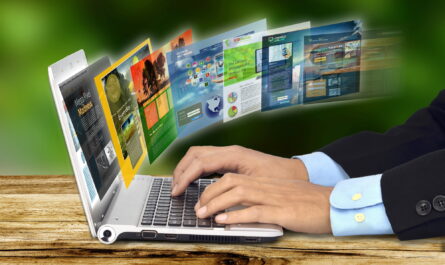
Introduction to IoT
The Internet of Things, also known as IoT, refers to the ever growing network of physical objects that are embedded with sensors, software and other technologies for the purpose of connecting and exchanging data with other devices and systems over the internet. From wearables and home appliances to vehicles and industrial machines, IoT allows everyday objects to collect and share data in innovative new ways.
Smart Homes and Wearables
One of the most visible applications of IoT is in the area of smart homes. Devices like smart lights, thermostats, locks and security systems allow homeowners to control and automate functions around their house from anywhere using a mobile app or voice commands. Smart home devices make tasks like controlling lights, temperature or checking if doors are locked much more convenient. The market for smart home devices is expected to grow significantly in the coming years as technology improves and prices decline.
The rise of IoT has also led to new types of wearable devices like smartwatches and fitness trackers that can monitor health metrics, receive notifications and even make mobile payments. Popular wearables allow users to stay connected without relying on their smartphone. Apps linked to wearables provide rich data insights into activity, sleep patterns and other metrics to help maintain healthy lifestyles.
Transportation and Logistics
Beyond homes and wearables, IoT is enabling new technologies in transportation and logistics. Connected vehicles that can communicate with traffic systems and each other are helping improve road safety and efficiency. Fleets of self-driving vehicles collecting vast amounts of mapping data through IoT sensors may transform how people and goods are transported in the future.
Within logistics, IoT devices allow companies to precisely track shipments, monitor environmental conditions of perishable goods, and optimize routing through predictive analytics. Technologies like RFID tagging give supply chain managers unprecedented real-time visibility into global inventory levels and product movement. The use of drones equipped with sensors for delivery and inspection is another emerging IoT application enhancing logistics operations.
Smart Cities and Infrastructure
At a broader level, IoT concepts are being applied to create smarter urban infrastructures and more responsive public services. From traffic control to environmental monitoring and emergency response – internet connected sensors placed strategically around cities offer solutions to improve quality of life for residents and visitors alike.
Some examples include IoT based smart parking systems that dynamically guide drivers to available spaces, intelligent lighting systems that adjust brightness based on time of day and presence detection, as well as connected waste management solutions optimizing collection routes. The data collected through urban IoT networks also helps city planners make more informed long-term decisions around transportation, utilities and other resources. Over time, smart city initiatives powered by IoT promise to enhance sustainability, efficiency and livability in urban centers around the world.
Healthcare Transformation
The introduction of IoT devices in the healthcare sector holds tremendous potential for improving outcomes, streamlining processes and revolutionizing patient care models. Telehealth platforms enabled by connected devices are expanding access to remote consultations, especially in rural communities. Wearable health trackers and continuous monitoring systems using biosensors are empowering individuals to better manage chronic conditions at home.
Within hospitals and clinics, IoT based solutions are boosting staff productivity through real-time location tracking of equipment and automating supply chain activities like inventory replenishment. The combination of portable devices, electronic health records and analytics is helping providers deliver more predictive, preventive and personalized care approaches. Furthermore, IoT allows pharmaceutical companies to enhance drug development, clinical trials and post-market surveillance. As technologies advance, healthcare is poised for even more wide-ranging changes through Internet of Medical Things applications.
Perhaps one of the most transformative impacts of IoT is how it is digitally revolutionizing industrial landscapes. By connecting industrial machinery, tools and work processes to central analytics systems using sensors, factories are optimizing operations in real-time. On the shop floor, IoTenabled industrial equipment streamlines production planning, improves asset utilization through predictive maintenance, reduces waste and enhances worker safety.
Overall equipment effectiveness metrics extracted from vast volumes of machine generated data help manufacturing organizations continuously refine processes. Similar concepts are enhancing activities like power generation, oil and gas extraction through remote monitoring of equipment performance, pressures, flows and more. Beyond manufacturing too, IoT driven digitalization is modernizing sectors like agriculture through environmental monitoring and smart irrigation. Truly, industrial IoT promises to drive whole new levels of operational efficiency, automation and data driven decision making across many verticals.
Conclusion
In summary, the Internet of Things represents a foundational shift taking place in how physical objects across multiple domains can be integrated with digital technologies and networked connectivity. Through IoT devices, both consumers and companies now have unprecedented access to data that was previously uncapturable at scale. This data holds the potential to literally transform experiences, processes and business models if harnessed intelligently. While still in its relative early stages, the rise of IoT presages a future where smart and connected systems become ubiquitous facets of our daily environments, interactions and workflows. Indeed, IoT will power innovation that massively improves many aspects of modern life in years to come.
*Note:
- Source: Coherent Market Insights, Public sources, Desk research
- We have leveraged AI tools to mine information and compile it



